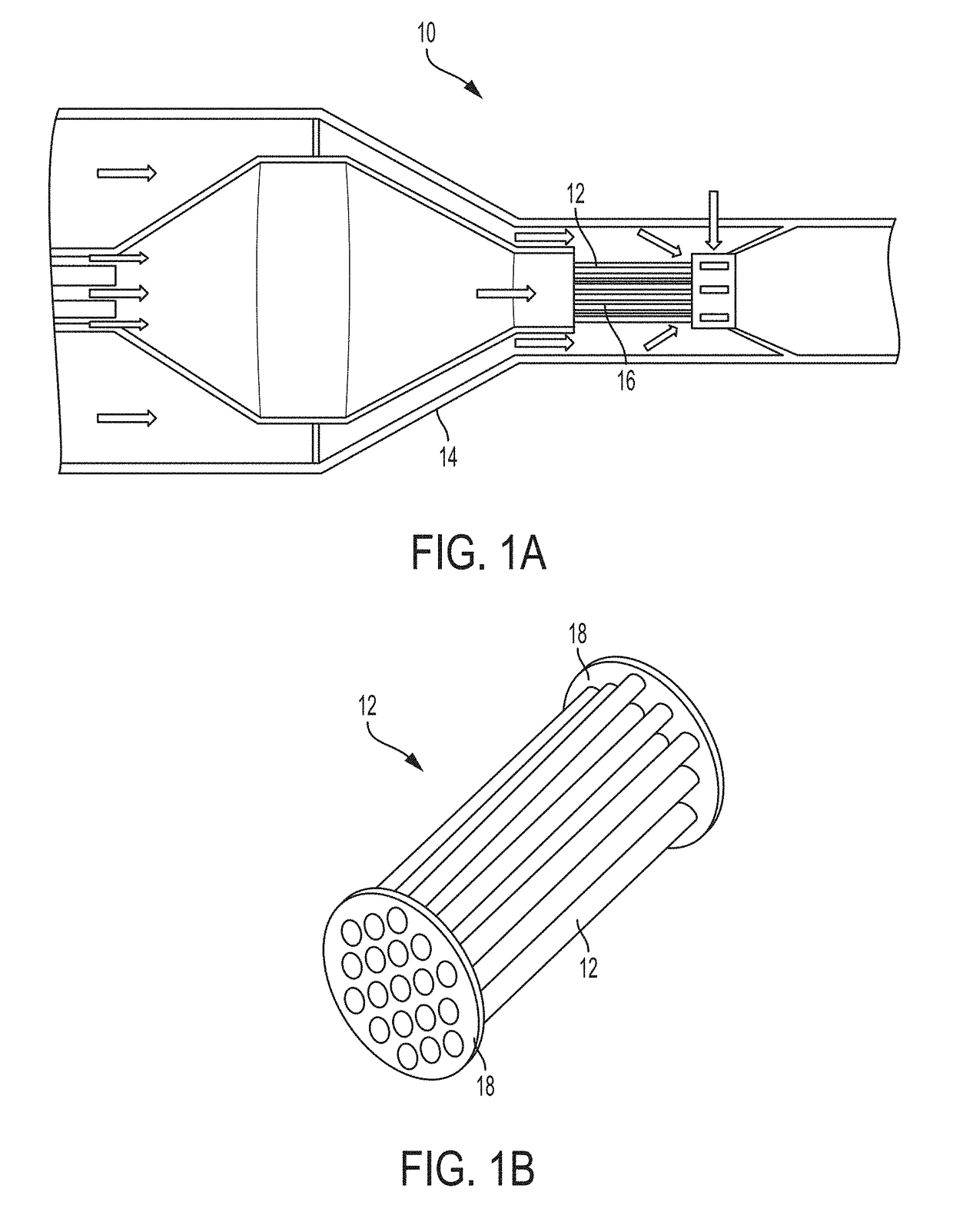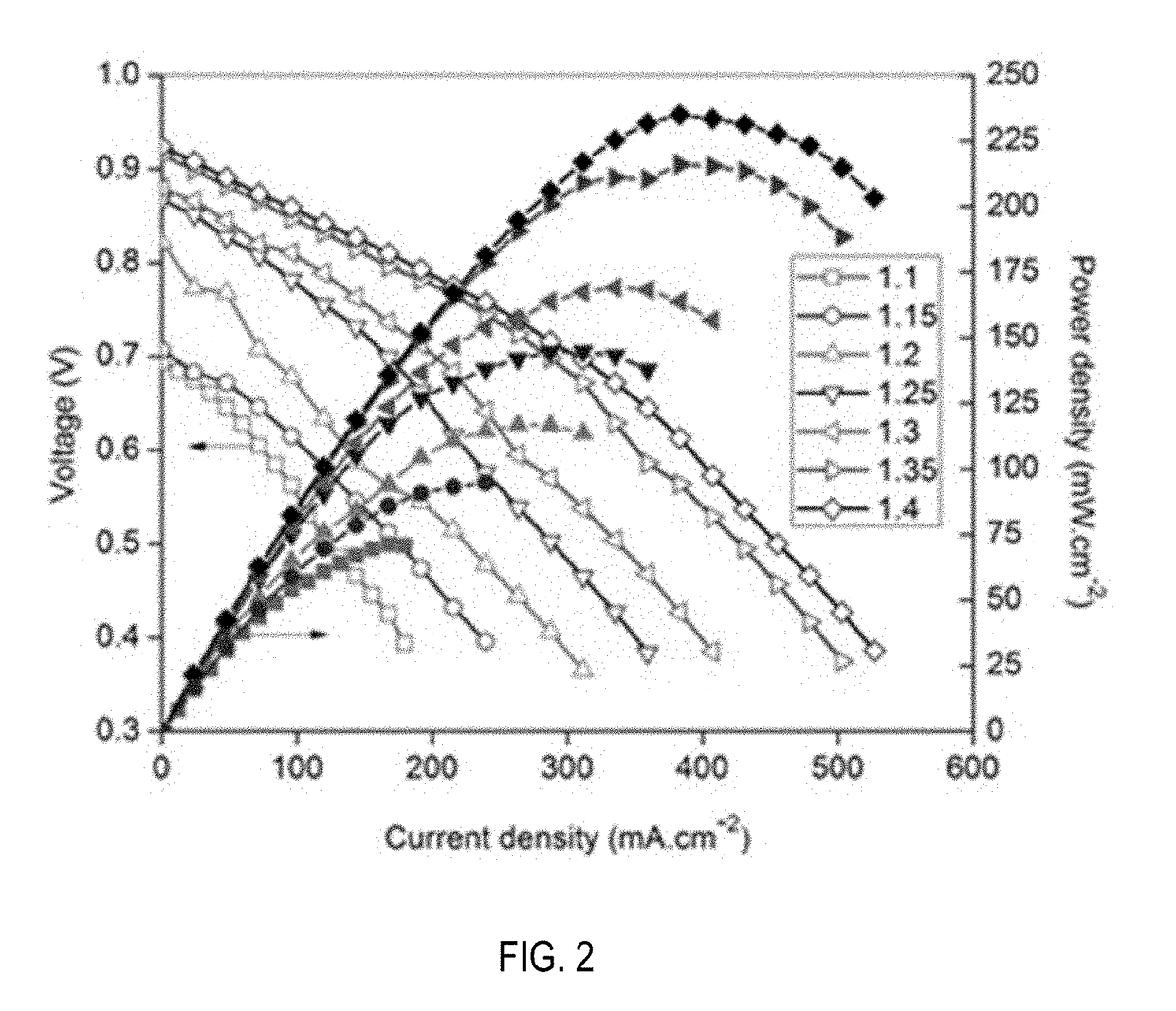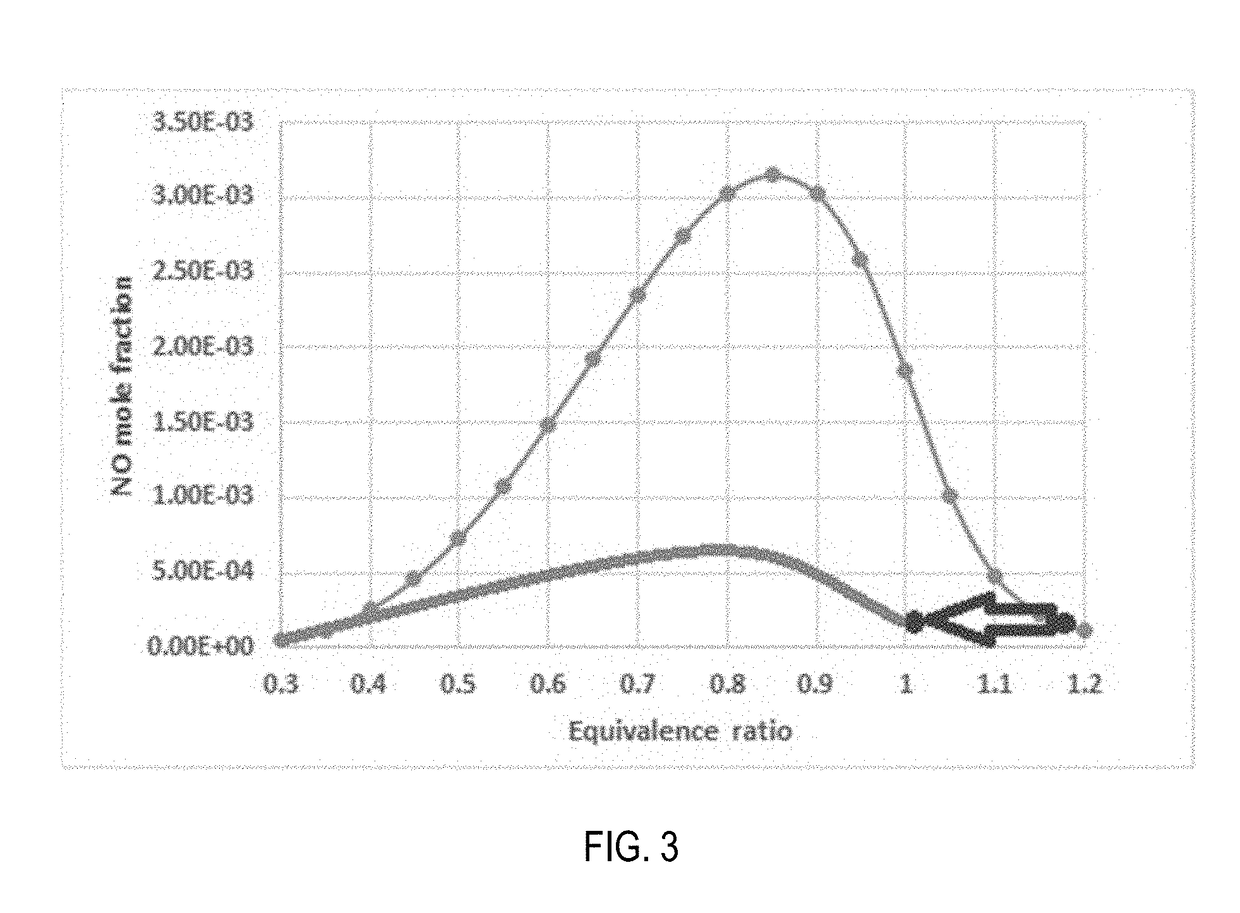FLAME-ASSISTED FUEL CELL INTEGRATED RICH BURN, QUICK MIX, LEAN BURN COMBUSTION FOR REDUCED NOx
a fuel cell and flame-assisted technology, applied in the field of microtubular flame-assisted fuel cells, can solve the problems of nox contributing to environmental damage, reducing nox becomes difficult, so as to reduce nox formation
- Summary
- Abstract
- Description
- Claims
- Application Information
AI Technical Summary
Benefits of technology
Problems solved by technology
Method used
Image
Examples
Embodiment Construction
[0020]Referring to the figures, wherein like numerals refer to like parts throughout, there is seen in FIGS. 1A and 1B a combustion system 10 having a micro-tubular flame assisted fuel cell (mT FFC) 12 integrated with the exhaust of a rich-burn, quick-mix, lean-burn (RQL) combustor 14 according to the present invention. As used herein fuel-rich refers to having more fuel than necessary for stoichiometric combustion and fuel-lean refers to having less fuel than necessary for stoichiometric combustion. Referring to FIG. 2B, micro-tubular flame assisted fuel cell (mT FFC) 12 comprises a plurality of individual micro-tubes 16 arranged in a predetermined pattern between manifolds 18 that permit access to the inside of each of plurality of individual micro-tubes 16.
[0021]FIG. 2 shows performance data for a mT-FFC operating in the fuel-rich combustion exhaust at various equivalence ratios of the methane combustion. Complete utilization of the excess fuel in the fuel rich exhaust is typical...
PUM
| Property | Measurement | Unit |
|---|---|---|
| combustion | aaaaa | aaaaa |
| electrical potential | aaaaa | aaaaa |
| capture heat energy | aaaaa | aaaaa |
Abstract
Description
Claims
Application Information
 Login to View More
Login to View More - R&D
- Intellectual Property
- Life Sciences
- Materials
- Tech Scout
- Unparalleled Data Quality
- Higher Quality Content
- 60% Fewer Hallucinations
Browse by: Latest US Patents, China's latest patents, Technical Efficacy Thesaurus, Application Domain, Technology Topic, Popular Technical Reports.
© 2025 PatSnap. All rights reserved.Legal|Privacy policy|Modern Slavery Act Transparency Statement|Sitemap|About US| Contact US: help@patsnap.com



